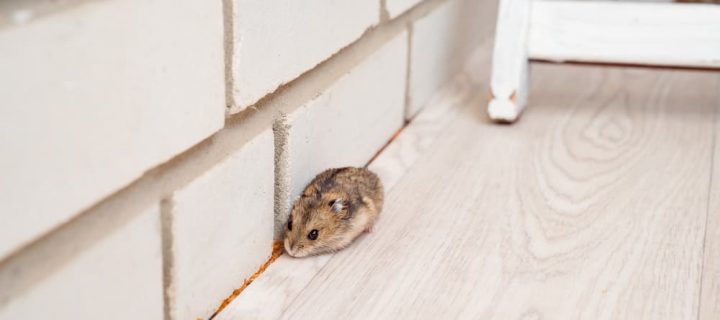Pests and mould infestations are something that every homeowner, landlord and tenant never wants to have to deal with. Increasing cleaning and safety measures around your home can significantly diminish your likelihood of having to treat mould and pest infestations. Various kinds of moulds and pests can cause extensive internal and external damage to your home, but they can also harm your health and well-being. Having a thorough understanding on how to detect these infestations, how to treat them, and what to do when the problem persists plays a key role in cultivating a safe and healthy home. So what are some tips on how to detect, prevent and treat mould and pest infestations? Well, before we figure that out, let’s all get on the same page on what exactly are these pests and moulds.
What exactly are we fighting here?
It’s no secret that mould is something we all wish to never find in our homes. But do we even know exactly what it is and why it comes to be? Michael Golubev, CEO of Mold Busters says “Mould is a type of fungus that grows on various surfaces and organic material such as plants, wood, fabric, food, floors, ceilings and drywall. This natural recycler grows from dead organic matter and thrives where moisture has accumulated. These microscopic spores can often be very hard to detect, but once mould colony forms, it will start to grow at a rapid pace.” Golubev continues to explain what homeowners can do to prevent such a repulsive organism to grow inside their home, as he says “homeowners must ensure that their home is consistently sanitized and isn’t prone to dampness.” But it’s not only about moisture and dampness — a home’s humidity levels also plays a vital role in mould growth, as Jake D’Aloisio, P.Eng, Product Manager of Condair adds, “Preventing mould in the home is typically a function of reducing the indoor air humidity (ie. in already humid climates) to 40-60% through dehumidification.”
Now, is there any link between mould and other pests?
When it comes to mould and other pests, it seems as though water might just be the common denominator. Jonathan Desjardin, Director of Operations of Desjardins Environnement, explains that pests can range from all sorts of animals and insects, and water is often their primary target. “Pests can range from spiders, mosquitoes, ants to large animals such as raccoons, squirrels and rats. What they all have in common is that they are seeking food, water and shelter. By eliminating these sources you are diminishing the possibility for pests to enter your home or creating a hiding spot within it.” In addition, Orkin Canada explains how these pests actually do enter our homes, as they state, “Homeowners need to routinely conduct an exterior and interior inspection in search of possible places that might attract pests and that are commonly used as entry points. Things that can be identified are structural deficiencies such as foundation cracks, gaps around utility lines or pipes, missing seals, gaps at the base of an entrance door. Remove any overhanging trees, branches or any neighbouring food sources as pests are in constant search for food.”
What are some common tactics homeowners can implement to help prevent pests and mould?
One easy method that can help prevent mould growth and pests from lingering around your home is to simply keep the exterior of your home clean. Whether it’s your roof or foundation, pests will linger if these parts of your home aren’t properly maintained consistently throughout the year. Kershan Bulsara, Owner and Manager of Roofmaster explains how there’s plenty of work to be done on one’s roof. Bulsara states, “Homeowners should be regularly cleaning off unwanted moss, twigs and algae found on their roof, as these can all cause various kinds of mould to develop. This can lead to more small pests and insects to linger around the vicinity and could tarnish your home’s value in the process.”
On the other hand, Alex Berezowski, Owner/General Manager of The Foundation Experts Inc, explains how the foundation of your home could be the one leading unwanted pests into your home. Berezowski explains, “Pests can commonly find their way into one’s home through cracks in the foundation. Cracks in one’s foundation may not always be the most obvious, but they can be extremely problematic. Cracks that extend from the floor to the ceiling, particularly in the basement, or any walls separating from the ceiling, can potentially be the spots where these pests are entering. Since these cracks aren’t always the most apparent, mould or strange smells can signify structural damage as well, as cracks in the foundation are a significant factor that allows water to infiltrate into one’s basement. More often than not, water is the source of mould, signifying that it’s essential for homeowners to eliminate any moisture found in their home.”
How about the interior of our homes — what can homeowners do inside to prevent mould and pests?
Now that we all know it’s critical to avoid water leaks and prevent damp environments in our homes, what about signs that aren’t always the most apparent?
Glenn Wiseman, Sales Manager of Top Hat Home Comfort Services argues that homeowners shouldn’t forget about one of the most common household maintenance chores — carpet cleaning. Wiseman states “Carpet cleaning is an integral part of household cleaning and maintenance. Carpets trap various dust particles that get released into the air, affecting your air quality and your health. Carpet deep and proper cleaning will help remove allergens, dirt, and dust particles that are trapped.” Matthew Baratte, VP Operations of Daimer Industries, adds, “Make sure to put food away in proper containers, remove crumbs, and vacuum regularly. Deep cleaning using standard cleaning compounds or steam will remove chemical trails and scents. Doing these two simple things are the best first defence.”
What to do if you’re not a homeowner?
If you’re a tenant or landlord reading this article, you might be wondering what the protocol may be when a mould or pest infestation appears in the home — whose responsibility is it to deal with the infestation? Is it the tenant who’s responsible for the costs of treatment and repair, or is it the landlord’s? Ashley Peeling, Regional Marketing Manager at CLV Group, a property management company, explains that it could go either way. Peeling says, “If a resident suspects that there is mould or pests in their home, the first thing they need to do is contact their landlord immediately. Your landlord will give instructions on how to proceed, such as washing measures and treatment protocols. Under the Landlord and Tenant Board (LTB), landlords are responsible for providing a healthy and safe environment for residents, including financial liability. However, if there is evidence that the resident fostered an environment with poor air circulation and high humidity that caused the mould, it could become their responsibility. Be sure to always have your lease with you to refer back to any clauses that were listed within.”
All this to say, if you are worried about mould growth or roaming pests, it is essential to take all the necessary precautions to detect, prevent and treat these infestations in your home. Take the time to read and learn about the causes and all of the effective prevention measures. By doing so, you’ll be ready to incorporate them into your home maintenance routine, which will help diminish the presence of these unwanted pests and moulds moving forward.







